Want to give your go-to meals an upgrade? Try adding a different grain to the mix. Here, RDs share 11 types of grains that are delicious and nutritious.
As we all know, grains are an important part of any well-balanced diet. While you’re likely already familiar with the more popular options like rice, quinoa, and corn, you might not know about all the types of grains available. They offer a host of short and long-term benefits, including keeping you feeling satisfied for longer than some other side dishes, helping regulate digestion, and even lowering your risk of heart disease and certain cancers. (Read: Adding more grains to your plate, especially whole grains, is a good thing.). In fact, getting more familiar with the many types of whole grains out there is a great way to experiment with flavor profiles and get creative in the kitchen.
“It’s really about finding and enjoying whole grains where they’re actually adding value to what you’re eating and not just making those swaps just from a nutritional perspective,” says Laura Geraty, MS, RD, certified intuitive eating coach, and owner of What We Eat NYC. Think: extra flavor, texture, and novelty in your go-to meals. She recommends buying a bunch of different types of grains (if you have the financial means to do so) and seeing what you like best.
Ahead, we go in-depth talking about what grains are, how whole grains and refined grains differ, and all the great benefits they can provide for your body. Then, read on for a list of different types of grains to spot a few that you might want to try experimenting with in the kitchen or when you’re out to eat.
What Are Whole Grains?
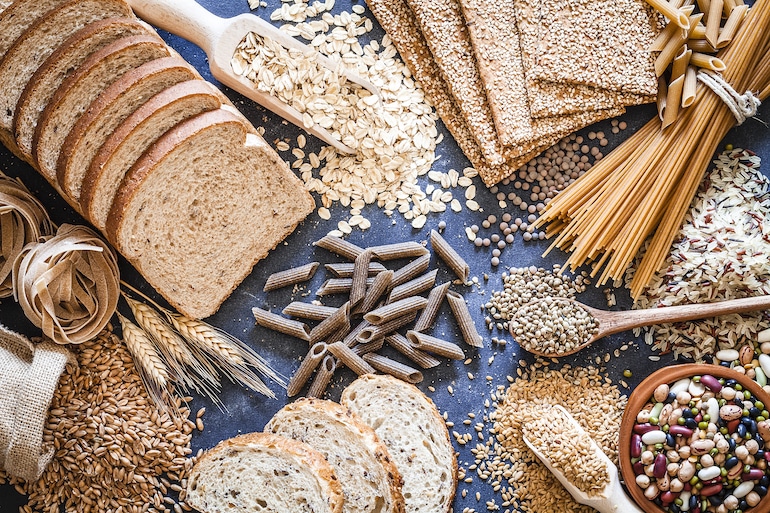
Grains, also known as cereal grains, are hard seeds that are harvested from a variety of grasses like wheat, corn, and rice. They are one of the most important staple foods because they make up nearly half of the calories consumed in the world. They vary in size, shape, and flavor profile, as well as the health benefits they offer.
What makes whole grains “whole” is that they retain all three components of the kernel: the bran, the germ, and the endosperm. The bran and germ contain fiber, protein, and healthy fats, as well as plenty of vitamins and antioxidants. When a refined grain is processed, it loses these two parts and only retains the starchy endosperm where most of the calories and carbohydrates come from.
“It’s delicious and softer because those tougher parts have been removed,” says Geraty about refined grains. Take white rice, for instance: It has been processed and is fluffy and starchy, versus brown or wild rice which are whole and retain a nuttier flavor and more robust texture. “They all deserve a place in our diet,” she says, emphasizing that not all of our grains need to be whole, but it’s important to look for whole grains that you enjoy eating.
What Are the Benefits of Whole Grains?
According to the USDA, at least half of your daily grain intake should consist of whole grains. This comes out to about three to six ounces of whole grains a day for the average adult, and you can estimate one serving to be roughly equivalent to an ounce.
“Whole grains not only provide fiber needed for digestive and heart health but also are a good source of vitamins and minerals, plus high levels of antioxidants, phytochemicals, and other healthy plant-based nutrients,” says Jerlyn Jones, RDN LD, owner of The Lifestyle Dietitian. She recommends easy swaps like using fiber-rich whole-grain cereal for breakfast, adding rolled oats to yogurt or smoothies, or snacking on popcorn (which is in fact a whole grain!).
Studies have shown that diets rich in whole grains have many long-term benefits such as a reduced risk of some chronic diseases like heart disease, diabetes, some types of cancer, and possibly even Alzheimer’s. If you’re looking for more immediate benefits, you’ll find plenty of them as well. “Because there is that extra fiber, protein, and healthy fat, [whole grains] take longer to digest. Instead of a quick rush of energy, you get a more sustained release so you feel satisfied longer,” says Geraty. And all that fiber means they’ll also aid with digestion to help you stay regular, too.
What’s the Difference Between Whole Wheat vs Whole Grain?
Whole grain and whole wheat both retain all three properties of the grain kernel—the bran, germ, and endosperm—so they pack all those good nutrients. However, the two terms just refer to a different type of product. Whole wheat is used when—you guessed it—only wheat kernels are used. Whole grain is appropriate when other grains are included as well. So, for instance, whole wheat bread only uses whole wheat kernels, while whole grain bread includes other grains like barley, rye, or quinoa, too.
The 11 Best Types of Grains to Try
Ready to start incorporating some new grains into your diet? These RD-approved grains are a great place to start.
1. Amaranth
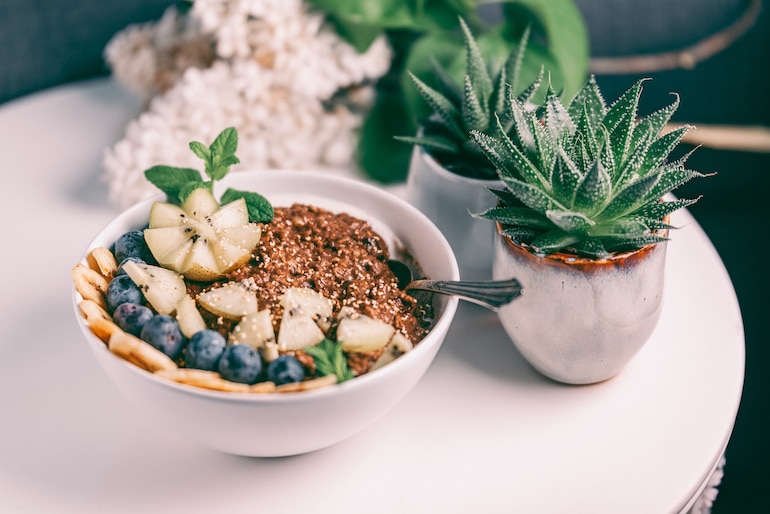
Both an ancient grain and a gluten-free whole grain, amaranth is actually made up of tiny seeds that can be enjoyed in their whole form or ground up into flour. It has a mild nutty taste that can be used in sweet or savory dishes, but it’s especially popular for gluten-free baking.
Health benefits: Because amaranth contains all nine essential amino acids—which isn’t common for grains—it’s a fantastic source of protein. It’s also a good source of fiber, magnesium, and iron.
Try it with: Buy amaranth flour to use in gluten-free muffins, cakes, or pancakes. It’s pretty dense, so combine it with another flour for a boost of protein. If used in seed form, cook it like rice in boiling watedr until the liquid is absorbed. Use it in place of rice or couscous or add it to a grain bowl for extra protein and fiber.
2. Barley
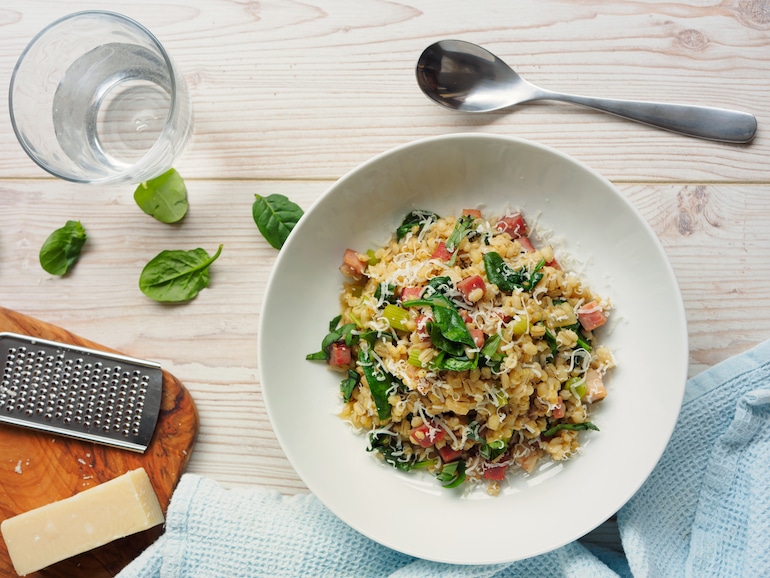
Barley is another ancient grain that has a dense, chewy texture when cooked. It’s actually the fourth most-produced grain in the world and is often used in beer and whiskey production. Although it is a whole grain, some commonly sold pearl barley lacks bran, so look for “whole barley” or “hulled barley” if you’re after the most nutritious option.
Health benefits: Barley contains a ton of fiber, making it great for digestion. It also contains a soluble fiber, beta-glucan, that may help regulate blood sugar levels and lower cholesterol.
Try it with: Because of its dense texture, you can use barley as an easy rice or couscous substitute. “Barley is excellent as a hot breakfast cereal or added to soups or stews,” says Jones.
3. Buckwheat
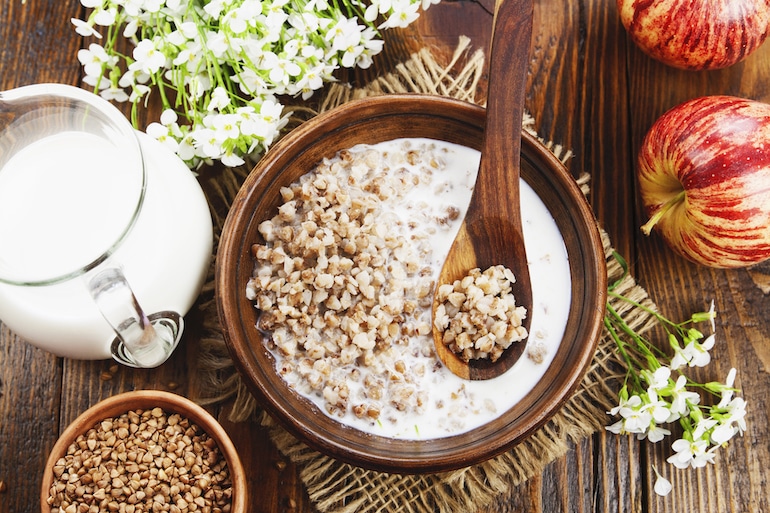
Buckwheat is similar to amaranth in that it’s also harvested as tiny seeds and is naturally gluten-free. It’s also commonly used on its own (to be used in a similar way as rice), or it’s ground and turned into flour for gluten-free baking.
Health benefits: Buckwheat is a good source of fiber and rich in minerals like manganese, iron, magnesium, and phosphorus. It also may also help lower blood sugar and contains many heart-healthy nutrients that could reduce your risk of heart disease.
Try it with: Its nutty flavor makes buckwheat a delicious substitute in hot breakfast cereals or added to grain bowls. Soba noodles are famously made from buckwheat, which can be used in stir-frys, soups, or enjoyed with veggies. You can also purchase buckwheat flour to use for gluten-free pancakes, quick breads, muffins, and more.
4. Bulgur
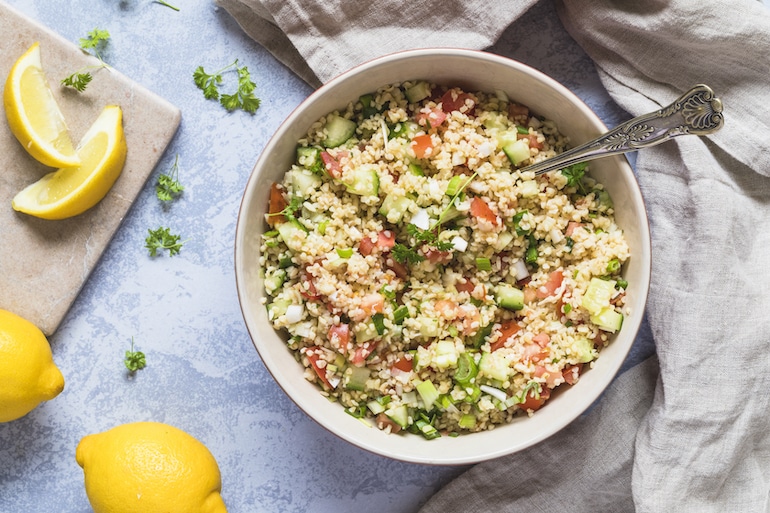
Bulgur is a fiber-rich grain made from cracked wheat that is partially cooked and dried. Because it’s already been cooked, it’s one of the speediest whole grains to make, usually ready in just 10 minutes.
Health benefits: Bulgur is primarily known for containing high amounts of fiber and protein, making it a hearty grain that will keep you feeling full longer.
Try it with: You’ll find bulgur used in many Middle Eastern dishes. It’s the main ingredient of tabbouleh and can easily be added to salads for added fiber and protein. You can also mix it into meatballs or veggie burgers, or use it as a substitute for rice. Just simmer it with two parts water to one part bulgur.
5. Corn

Corn is one of the top three most important food crops in the world—next to rice and wheat—and is found in a huge variety of foods we consume every day. Most of the corn products you find in the grocery store, however, have been degermed for longer shelf life, so look for whole grain corn if you’re looking for a more nutritious option.
Health benefits: Whole grain corn is a great source of fiber and contains many vitamins and minerals including zinc, magnesium, and phosphorus. Sweet corn in particular offers a bunch of vitamins, including niacin, potassium, and folate acid.
Try it with: If you didn’t already know it, popcorn is actually a great whole grain snack. You can air pop it for an even healthier treat without using oil or butter. Other ways to enjoy this staple is by using whole grain cornmeal in your grits, to make polenta, or to whip up cornmeal pancakes, muffins, or cornbread.
6. Farro
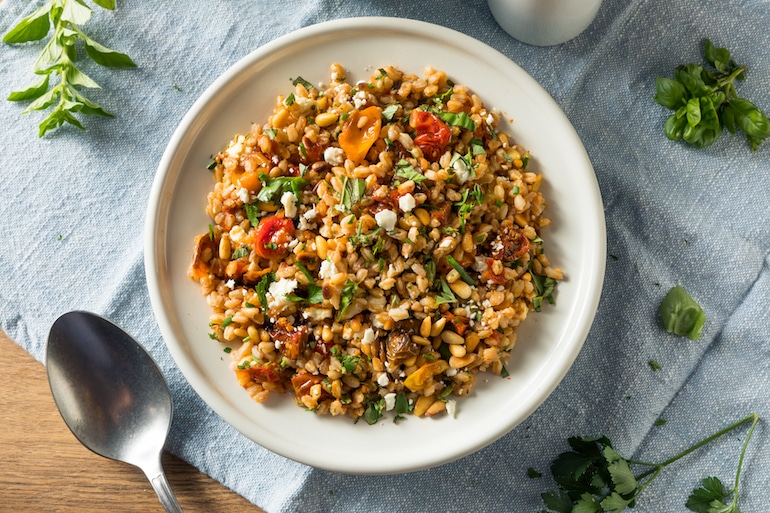
Another ancient grain, Farro is made from wheat and often sold pearled rather than whole. Pearled farro cooks faster, but whole grain farro is the most nutrient-dense if that’s what you’re looking for. It has a nutty, chewy texture and can be used similarly to barley in most dishes.
Health benefits: Farro contains high levels of protein and fiber, making it a hearty grain that will easily fill you up. It also contains vitamins A, B, C, and E and has lower levels of gluten so it might be a better choice for someone who’s sensitive to gluten (but it’s not safe for those with celiac disease).
Try it with: Farro is a popular grain used in Italian cuisine and featured in many soups and salads. It also makes for an excellent substitute for rice in risotto because it holds up well. “It’s not too much of a chew, it [has] a really nice mouthfeel and a gentle nuttiness,” says Geraty. “It can be a blank palette for so many different grain salads.” You can also usually buy farro that cooks in 30 minutes or less at the store for easy dinner prep.
7. Oats

Oats come in a few varieties, including steel-cut oats, rolled or old-fashioned oats, and instant oats. Although each kind can be cooked and used differently, they’re all considered whole grains. Note that oats can be cross-contaminated with gluten through harvesting or processing, so look for gluten-free oats specifically if you have an allergy.
Health benefits: Oats are loaded with nutrients. They’re fiber-rich so they’ll keep you feeling full, especially if you start a busy day with a bowl of oatmeal. In particular, they contain high amounts of beta-glucan, which has vast benefits like reducing cholesterol and blood sugar as well as promoting growth of good gut bacteria.
Wondering what the difference between steel-cut oats and rolled oats is if they’re both whole grains? Steel-cut oats are actually higher in fiber and have a lower glycemic index, so they release energy more slowly. “I rarely meet someone who likes rolled oats or quick cook oats who doesn’t really appreciate steel cut oats and like them a little bit more,” says Geraty. They’re a heartier option that might taste better if you like toppings on your oatmeal because they’ll be less mushy.
Try it with: “Stir a handful of rolled oats in your yogurt, or smoothie for a boost of fiber and quick crunch,” says Jones. In addition to enjoying a classic bowl of oatmeal in the morning topped with berries, you can also try it in a savory way topped with veggies and a fried egg.
8. Quinoa
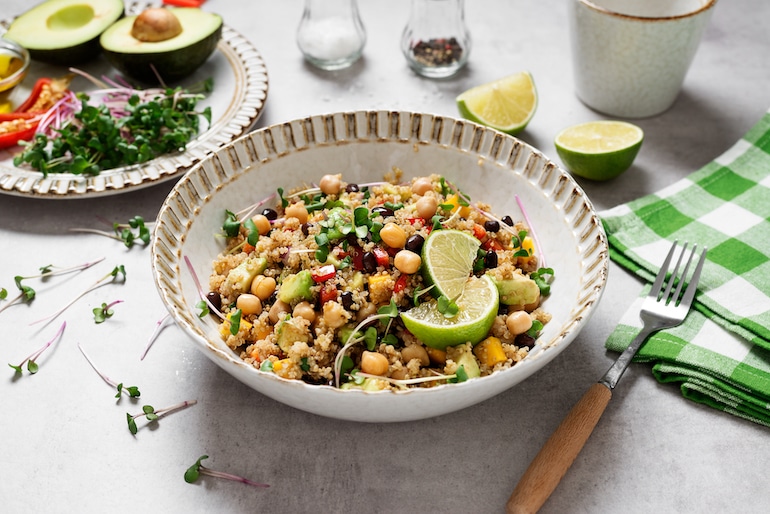
Quinoa is another ancient grain that is typically used in its seed form, although it can also be rolled into flakes or ground into flour for gluten-free baking. It’s a whole grain that comes in many different varieties with the most popular ones being white, red, and black—or a combination of all three.
Health benefits: Quinoa is high in fiber as well as minerals like iron and magnesium. Like amaranth, it contains all nine essential amino acids, making it a great source of protein. It’s even thought to reduce inflammation as well as help lower cholesterol.
Try it with: Quinoa is an easy ingredient to add to many dishes for a boost of nutrients, such as chili or soup. Geraty likes using it in place of couscous because it has a similar consistency but gives off more flavor. “It’s super fluffy and absorbs flavors and sauces well,” she says.
9. Rice
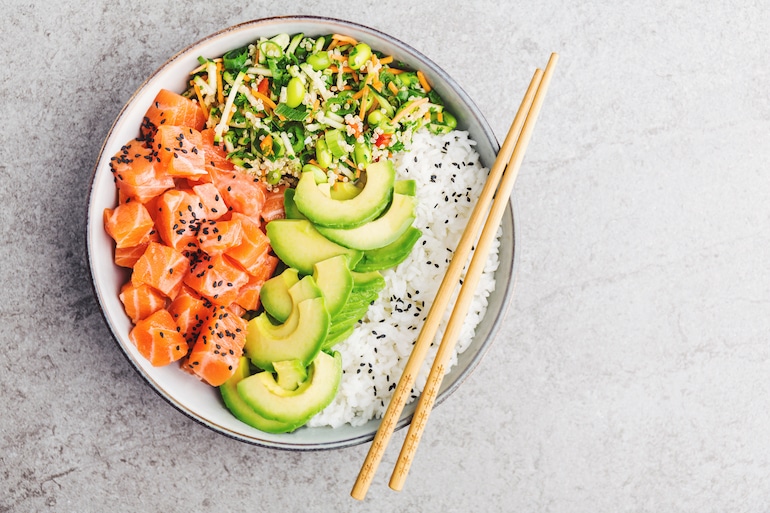
You know this grain well. If you’re looking for rice that offers more nutritious benefits, look for whole grain rice at the store. This may include red, black, brown, or wild rice, all of which offer a range of delicious flavors and textures. White rice, which is not a whole grain, is softer and fluffier. You can find varieties of rice like basmati, jasmine, short- and long-grain in brown or white.
Health benefits: Rice has a wide variety of nutritional benefits depending on what type you’re eating. Whole grain rice will be higher in protein and fiber than white rice, while some varieties offer specific benefits like inflammation-fighting red and black rice. Eating brown rice can also help regulate blood sugar, while wild rice is a great source of vitamin B and magnesium.
Try it with: Aside from using rice as a delicious side, add whole grain rice to salads or soups for a nuttier flavor. Geraty likes putting brown rice in salads because it’s flavorful, chewy, and holds up well. Another tip is mixing whole grain and white rice together for a fiber boost, says Jones.
10. Spelt
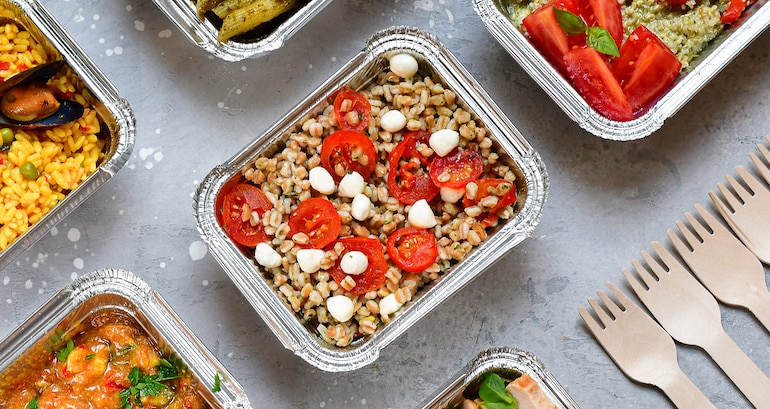
Spelt is a type of wheat and ancient whole grain that is similar to farro or barley in appearance and in its chewy, nutty consistency. It’s often actually confused for farro, although they have different gluten content and overall texture. Spelt typically has an al dente consistency, but it can be used in just about the same way you’d use farro in soups or salads. You can also purchase it in flour form to make bread.
Health benefits: Spelt is high in protein and fiber, plus other great nutrients like iron and zinc.
Try it with: Use spelt flour to make a high-fiber pizza dough or add it to veggie burgers for a more filling meal. You can also add a handful to soups, chilis, or salads for a boost of protein and fiber.
11. Teff
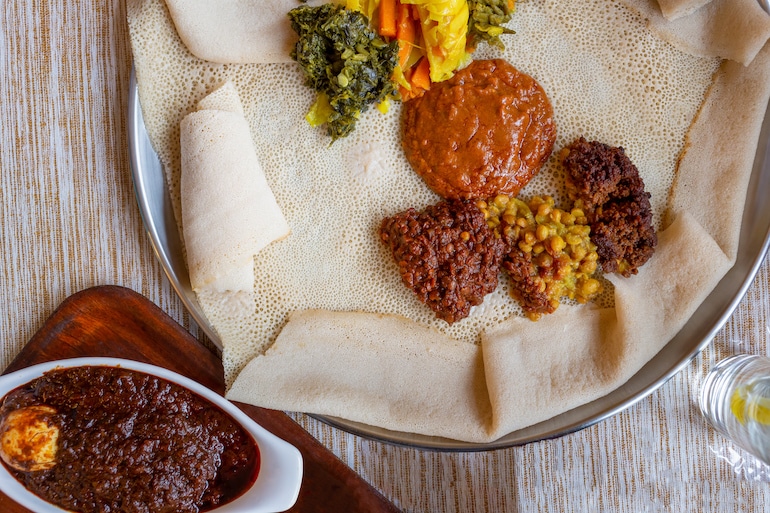
Teff is a tiny gluten-free seed that also functions as a whole grain with a mild nutty flavor. It can be simmered with water like other whole grains or turned into flour for gluten-free baking.
Health benefits: Teff is known to be very high in iron, so much so that it’s been linked to lowered rates of anemia in pregnant people and may also be used to avoid iron deficiency. Additionally, teff is one of the most fiber-rich grains, aiding digestion.
Try it with: Teff is mostly grown in Ethiopia and Eritrea and used to make injera, a traditional spongy flatbread intended for scooping up food and soaking up juices. “Cook [teff] into a creamy hot cereal or a tasty polenta. You also can mix teff with your choice of veggies for a side dish,” recommends Jones.
